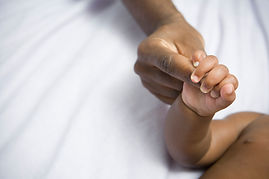The arrival of a new baby brings immense joy and happiness, along with the responsibility of ensuring their health and comfort. One common issue that parents often encounter, especially during hot and humid weather, is baby heat rash. Also known as prickly heat or miliaria, heat rash can be uncomfortable for your little one.

What is Baby Heat Rash?
Baby heat rash is a common skin condition that occurs when sweat becomes trapped in the sweat ducts, leading to irritation and inflammation of the skin. It primarily affects babies and young children because their sweat ducts are not fully developed. Heat rash can manifest in various forms, including prickly heat, sweat rash, or sweat bumps.
Causes of Baby Heat Rash
Baby heat rash is primarily caused by sweating in hot and humid weather. The sweat ducts become clogged, trapping sweat beneath the skin's surface. Other contributing factors include:
- Overdressing the baby.
- Using heavy blankets or clothing.
- Prolonged exposure to high temperatures.
- High humidity levels.
- Physical activity that leads to sweating.
Recognizing the Symptoms
Common Symptoms of Baby Heat Rash
Baby heat rash typically appears as tiny red bumps or blisters on the baby's skin. Common symptoms include:
- Redness and irritation.
- Small, red bumps or blisters.
- Prickly or stinging sensation.
- Itching or discomfort.
The rash usually develops in areas where sweat accumulates, such as the neck, armpits, chest, back, groin, and diaper area. In mild cases, the rash may resolve on its own when the baby cools down. However, severe heat rash can lead to complications, such as secondary infections, if left untreated.
Prevention of Baby Heat Rash
Preventing baby heat rash is essential, especially during hot weather or when traveling to warm climates. Here are some effective prevention strategies:
Dressing Your Baby
- Choose lightweight, loose-fitting clothing made of breathable fabrics like cotton.
- Avoid overdressing your baby, as excess layers can trap heat.
- Use a wide-brimmed hat to shield your baby's face from the sun.

- Maintain a comfortable room temperature in your baby's environment, especially during sleep.
- Use fans or air conditioning to cool down the room.
Proper Hydration
- Ensure that your baby stays hydrated by offering breast milk or formula regularly, especially in hot weather.
- Older infants can also be given water in small amounts.
Avoid Excessive Swaddling
- While swaddling can help soothe a newborn, it's crucial not to overdo it, as it can lead to overheating.
Frequent Bathing
- Give your baby lukewarm baths to cool down their skin.
- Use a mild, fragrance-free baby soap and avoid scrubbing the skin.
Air Circulation
- Ensure that your baby's sleeping area is well-ventilated to allow for proper air circulation.
Limit Sun Exposure

- Protect your baby's delicate skin from direct sunlight by keeping them in the shade or using baby-safe sunscreen (for babies older than six months).
Treating Baby Heat Rash
If your baby develops heat rash, there are several steps you can take to provide relief and promote healing:
- Move your baby to a cooler environment with adequate ventilation.
- Use a fan to help cool down the room.
- Remove excess clothing to allow the skin to breathe.
Lukewarm Baths
- Give your baby a lukewarm bath to help soothe the skin. Avoid using hot water, as it can exacerbate the rash.
Loose Clothing
- Dress your baby in loose-fitting, breathable clothing to prevent further irritation.
- Applying calamine lotion to the affected areas can help alleviate itching and discomfort.
Avoid Ointments and Creams
- Avoid using heavy creams, ointments, or petroleum jelly on the heat rash, as they can trap heat and worsen the condition.
Keep Skin Dry
- Ensure that your baby's skin remains dry and clean. Pat the affected areas gently with a soft towel after bathing.
Consult a Pediatrician
- If the rash persists or worsens, or if you notice signs of infection (pus, fever, or swelling), consult a pediatrician for further evaluation and treatment.
When to Seek Medical Attention
While most cases of baby heat rash can be managed at home, there are situations where medical attention is necessary. Here are some instances when you should consult a healthcare professional:
Persistent Rash
- If the rash does not improve or worsens despite home remedies and preventive measures.
Signs of Infection
- If you notice signs of infection, such as pus, fever, increased swelling, or warmth around the rash.
Severe Discomfort
- If your baby is experiencing severe itching, pain, or distress due to the rash.
Swelling and Redness
- If the rash spreads rapidly or if you notice increased redness, swelling, or tenderness.
Baby heat rash is a common and usually benign skin condition that can be managed effectively with proper prevention and treatment. By understanding the causes, recognizing the symptoms, and taking preventive measures, you can help your baby stay comfortable and rash-free, especially during hot and humid weather. Remember that every baby is unique, so it's important to tailor your approach to their specific needs. With your loving care and attention, your little one will have the best chance to enjoy a happy and healthy start in life.



Comments